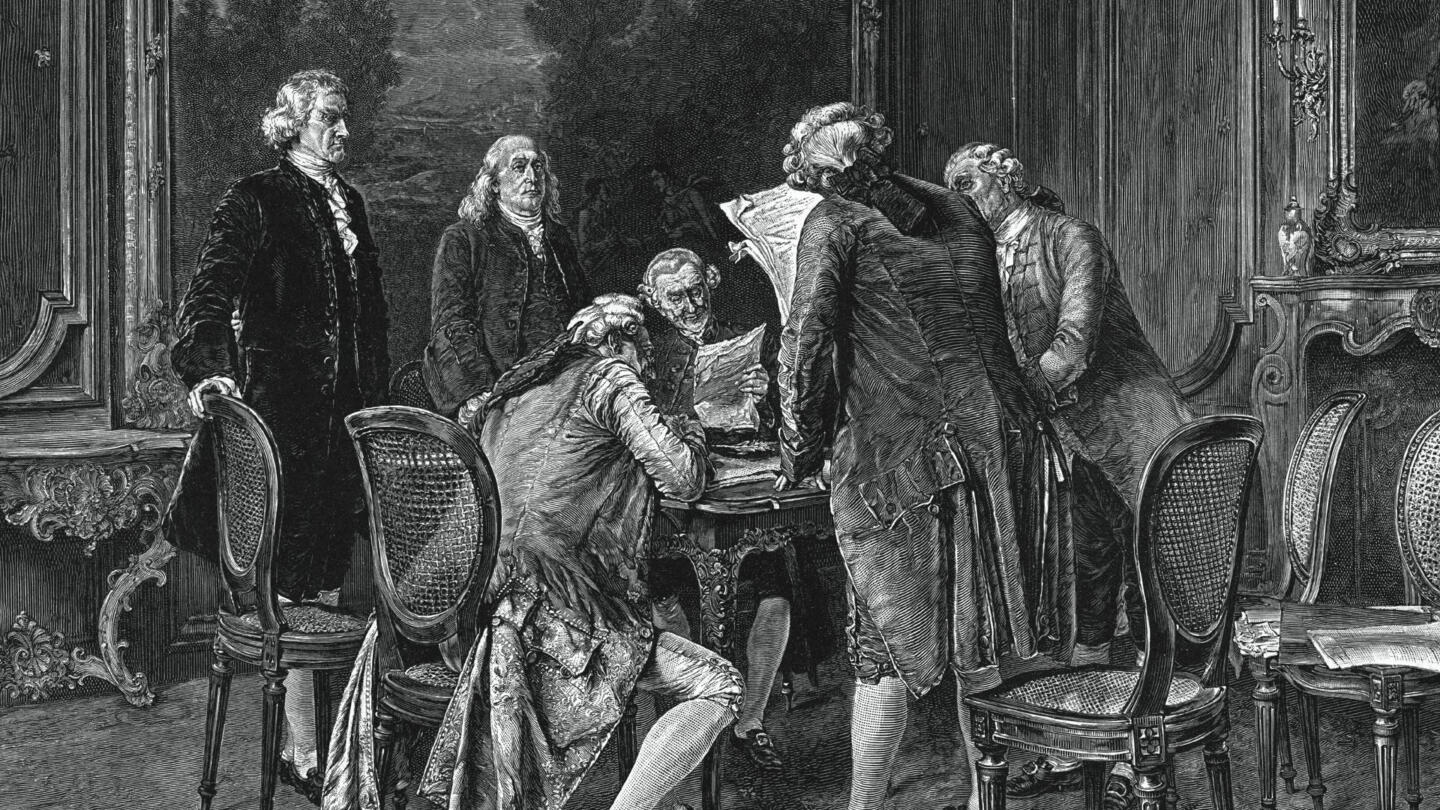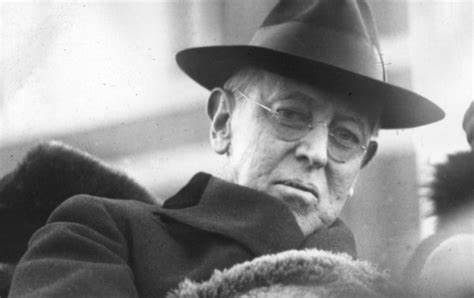
Treaty of Paris signed
The American Revolution officially comes to an end when representatives of the United States, Great Britain, Spain and France sign the Treaty of Paris on September 3, 1783. The signing signified America’s status as a free nation, as Britain formally recognized the independence of its 13 former American colonies, and the boundaries of the new republic were agreed upon: Florida north to the Great Lakes and the Atlantic coast west to the Mississippi River.
The events leading up to the treaty stretched back to April 1775, on a common green in Lexington, Massachusetts, when American colonists answered King George III’s refusal to grant them political and economic reform with armed revolution. On July 4, 1776, more than a year after the first volleys of the war were fired, the Second Continental Congress officially adopted the Declaration of Independence. Five difficult years later, in October 1781, British General Charles Lord Cornwallis surrendered to American and French forces at Yorktown, Virginia, bringing to an end the last major battle of the Revolution.
In September 1782, Benjamin Franklin, along with John Adams and John Jay, began official peace negotiations with the British. The Continental Congress had originally named a five-person committee—including Franklin, Adams and Jay, along with Thomas Jefferson and Henry Laurens—to handle the talks. However, both Jefferson and Laurens missed the sessions—Jefferson had travel delays and Laurens had been captured by the British and was being held in the Tower of London. The U.S. delegation, which was distrustful of the French, opted to negotiate separately with the British.
During the talks Franklin demanded that Britain hand over Canada to the United States. This did not come to pass, but America did gain enough new territory south of the Canadian border to double its size. The United States also successfully negotiated for important fishing rights in Canadian waters and agreed, among other things, not to prevent British creditors from attempting to recover debts owed to them. Two months later, the key details had been hammered out and on November 30, 1782, the United States and Britain signed the preliminary articles of the treaty. France signed its own preliminary peace agreement with Britain on January 20, 1783, and then in September of that year, the final treaty was signed by all three nations and Spain. The Treaty of Paris was ratified by the Continental Congress on January 14, 1784.

AMERICAN REVOLUTION
1777
The Stars and Stripes flies in battle for the first time
The American flag is flown in battle for the first time, during a Revolutionary War skirmish at Cooch’s Bridge, Delaware. Patriot General William Maxwell ordered the stars and strips banner raised as a detachment of his infantry and cavalry met an advance guard of British.

WORLD WAR II
1943
Allies invade Italian mainland
The British 8th Army under Field Marshal Bernard L. Montgomery begins the Allied invasion of the Italian peninsula, crossing the Strait of Messina from Sicily and landing at Calabria–the “toe” of Italy.

RELIGION
1914
Pope Benedict XV named to papacy
On September 3, 1914, barely a month after the outbreak of World War I, Giacomo della Chiesa is elected to the papacy of the Roman Catholic Church, becoming Pope Benedict XV. An aristocratic native of Genoa, Italy, who had served as a cardinal since the previous May.
U.S. PRESIDENTS
1919
Wilson embarks on tour to promote League of Nations
On September 3, 1919, President Woodrow Wilson embarks on a tour across the United States to promote American membership in the League of Nations, an international body that he hoped would help to solve international conflicts and prevent another bloody world war.

CRIME
2004
Russian school siege ends in bloodbath
A three-day hostage crisis at a Russian school comes to a violent conclusion after a gun battle erupts between the hostage-takers and Russian security forces. In the end, over 300 people died, many of them children, while hundreds more were injured.

CIVIL WAR
1861
Confederate forces enter Kentucky
Confederate General Leonidas Polk commits a major political blunder by marching his troops into Columbus, Kentucky—negating Kentucky’s avowed neutrality and causing the Unionist legislature to invite the U.S. government to drive the invaders away.

WORLD WAR II
1939
Britain and France declare war on Germany
On September 3, 1939, in response to Hitler’s invasion of Poland, Britain and France, both allies of the overrun nation declare war on Germany. The first casualty of that declaration was not German—but the British ocean liner Athenia, which was sunk by a German U-30 submarine.

Comments
Post a Comment